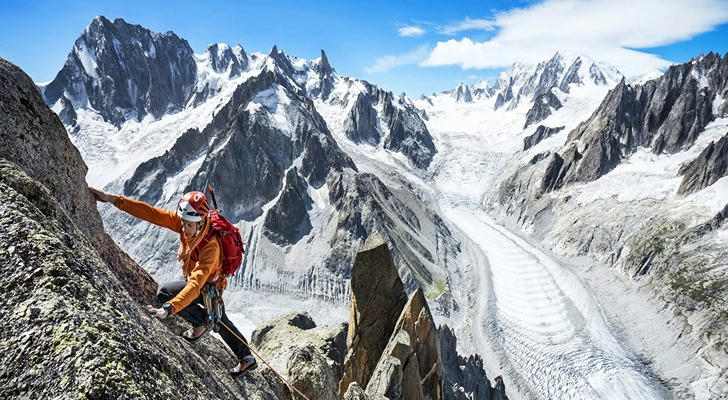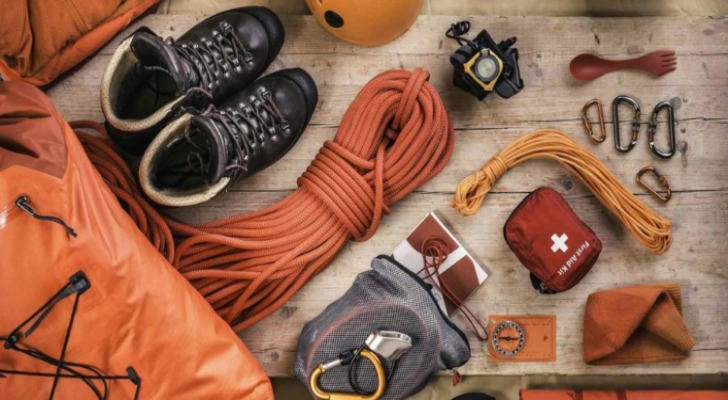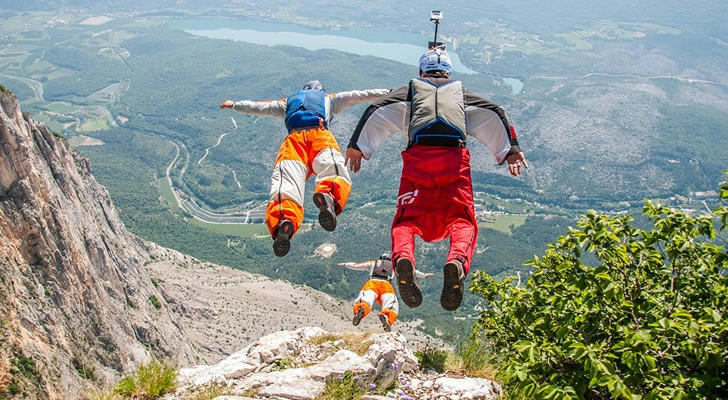The world's three most exciting adventure activities
When we step out of our comfort zone and into the unknown, adventure sports show us its unparalleled charm. Whether it is skydiving overlooking the earth from a high altitude or surfing conquering yourself in wild waves, it is not only a challenge to the limits of the body, but also a profound test of inner courage and confidence. Adventure sports allow us to experience the surge of adrenaline, close contact with nature and the joy of personal growth in its own unique way.
1.BASE skydiving

Imagine that you are standing on the edge of a cliff, with thousands of meters of empty space under your feet, and your heartbeat is as fierce as thunder. This is the feeling of BASE skydiving - jumping from a towering cliff, a majestic building or a skyline. In an instant, you feel the thrill of weightlessness, as if you are in close contact with the earth, and then in a microsecond, your parachute opens and a strong wind rushes towards you. The wildness of free fall and flying in the sky is an extreme excitement that makes you swing between gravity and freedom!
Recommended locations: Mount Stuart (Switzerland), Yosemite National Park (USA), Lofoten Islands (Norway).
2.Deep diving adventure

Imagine you are wrapped in a sturdy submersible, slowly sinking into the deep blue abyss. There is a breathtaking silence all around, with only the slight hum of the submersible and the dark figures of deep-sea creatures. With each meter you descend, the pressure of the sea water is like an invisible hand holding your body, while you explore unknown wonders in this mysterious underwater world - glowing jellyfish, strange fish, and the deep-sea canyons that no one has ever set foot in. Deep diving adventure is a shocking journey of zero-distance contact with the underwater world.
Recommended locations: Great Barrier Reef (Australia), Blue Hole (Mexico), Red Sea (Egypt).
3.Mountain climbing

Imagine you are standing on the top of Mount Everest, the "roof" of the earth, surrounded by an endless world of snow-white. Every step is full of challenges, and every breath is extremely difficult because the air is thin and the cold wind is biting. You have overcome the wind, snow and freezing, and the extreme altitude sickness, and finally stood on the top of the mountain. There is an endless sea of clouds under your feet, as if you have touched the edge of the sky. At this moment, the joy and sense of accomplishment of reaching the top will closely connect you with the most majestic mountains in the world, and it is the ultimate challenge and conquest of your own limits!
Recommended locations: Mount Everest (Nepal), Mount Kilimanjaro (Tanzania), Mount Aconcagua (Argentina).
Alex, an adventurous British mountaineering enthusiast, decided to challenge the top of the world with his vision of Mount Everest. Although he is passionate about climbing, he is not well prepared for the harsh environment of the mountains. His high mountain acclimatization training was not in place, and as a result, he suffered severe altitude sickness when he approached the summit. The severe headache and nausea made it almost impossible for him to persist. In addition, his equipment was not up to standard, lacking spare oxygen bottles and suitable crampons, and his guide was inexperienced and seemed helpless in the face of bad weather. In the end, they lost their way in a strong blizzard and were almost trapped. Fortunately, the rescue team arrived in time and evacuated them safely. This experience taught Alex profoundly that true adventure is not only a test of courage, but also a challenge of preparation and wisdom.
When doing exciting adventure sports, how can you enjoy the thrill of danger while ensuring the safety of yourself and the environment?

1.Choose a certified professional guide
Check qualifications: Choose a coach or guide with relevant qualifications, such as a registered mountain guide, a certified diving instructor, etc.
Experience and evaluation: Give priority to instructors with rich experience and good reviews in the industry.
2.Use appropriate safety equipment
Check equipment: Carefully check whether the equipment is intact before use to ensure that it is not worn, damaged or aged.
Professional configuration: Use equipment that meets international safety standards, such as CE-certified helmets, UIAA-certified climbing ropes, etc.
Proper wear: Make sure all equipment is worn correctly and adjusted to the appropriate tightness, especially safety belts, helmets and protective gear.
3.Understand and follow safety rules
Read instructions: Read all safety manuals, guidelines and operating instructions carefully before the activity.
Follow instructions: Strictly follow the instructions of the coach or guide, and do not take risks or change plans at will.

4.Assess your personal abilities
Physical fitness assessment: Conduct a physical fitness assessment to ensure that you are in the right physical condition to participate in the activity. For example, long-term and high-intensity activities require good cardiopulmonary function and endurance.
Skills test: Before participating, you should self-test relevant skills, such as rock climbing skills or diving skills, to ensure that you have the necessary abilities.
5.Monitor the weather and environment
Weather forecast: Check the detailed weather forecast before the activity, including information such as temperature, wind speed, precipitation, etc.
Environmental assessment: Understand the terrain, geological conditions and potential hazards in the activity area, such as ice and snow, tides, etc., to make corresponding safety preparations.
6.Maintain effective communication
Communication equipment: Carry and be proficient in using communication equipment, such as walkie-talkies, satellite phones, etc., so that you can quickly contact team members or rescue services in an emergency.
Information sharing: Share detailed plans and routes with team members before the activity to ensure that everyone has a clear understanding of the expectations and steps of the activity.
Through these detailed measures, you can not only ensure that you enjoy the excitement of adventure sports, but also maximize the safety of yourself and the environment.
